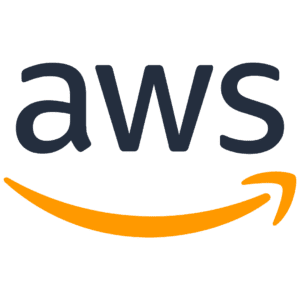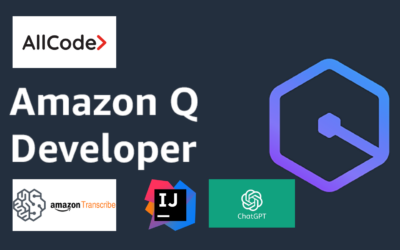Share

AWS PaaS
In the rapidly evolving landscape of information technology, the emergence of cloud computing, spearheaded by AWS in the 2000s, has brought about monumental changes that have reshaped how organizations operate. As we conclude 2020, a staggering 85% of businesses are projected to have migrated their operations to the cloud. This shift has empowered companies to leverage cloud-based data for personalized marketing strategies and seamless information sharing across departments, thus breaking down traditional silos that hinder digital transformation efforts. Central to this transformative journey is Platform as a Service (PaaS), a cutting-edge cloud computing model that seamlessly integrates servers, storage, management frameworks, and the desired software for deploying applications.
Amazon Web Services (AWS) plays a crucial role in enabling businesses to achieve their goals by revolutionizing the cloud computing industry. Originating from Amazon’s internal IT infrastructure needs, AWS has rapidly evolved into a multi-billion-dollar company, offering its services not only to Amazon but also to other prominent companies such as Netflix, Dropbox, and Reddit. The history of AWS showcases how a single company’s innovative solution has transformed the way businesses leverage the cloud to enhance their operations and achieve growth. AWS’s continuous advancements and robust support have made it an indispensable tool for countless businesses striving to innovate, scale, and succeed in the digital era.
PaaS equips you with everything you need to achieve all of these objectives and more.
What Is PaaS?
Platform as a Service is an innovative cloud computing model combining servers, storage, and management frameworks with the software you desire to deploy applications. With PaaS, you can wave goodbye to the need to invest in on-premises hardware and the stress associated with setting up a virtual environment to run your apps. It offers a pre-packaged bundle of cloud computing hardware and software resources, simplifying the process of building and deploying applications.
PaaS goes beyond just providing a convenient infrastructure. It is a comprehensive solution encompassing both a framework and an application development platform. This means that users can effortlessly create applications that seamlessly run on cloud computing technologies. By offering this platform, PaaS enables developers to focus on their applications’ core functionality and features without getting bogged down by the complexities of managing the underlying infrastructure.
To make PaaS even more convenient, a third-party vendor hosts and maintains all the necessary hardware and software components in their high-tech data centers. This ensures that users can access the platform online without worrying about hardware procurement, maintenance, or software updates.
As an illustration, AWS Elastic Beanstalk is preconfigured to handle numerous programming languages and environments immediately. You may send and test apps for a variety of gadgets in a short period of time and scale them up or down quickly.
But what sets PaaS apart are the unique characteristics that make it an indispensable tool for businesses:
1. Virtualization Technology: PaaS harnesses virtualization technology, enabling you to quickly scale computing resources up or down to adapt to your ever-changing business needs. This flexibility allows you to optimize resource allocation and efficiently manage your application workloads.
2. Streamlined App Development Services: PaaS offers many services designed to expedite the app development lifecycle. These services include tools, frameworks, and libraries that simplify coding, testing, and deployment tasks. With PaaS, you can accelerate your development process and bring your applications to market faster.
3. Collaborative Development Environment: PaaS provides a shared development environment, allowing multiple users to collaborate on the same application simultaneously. This fosters teamwork and enhances productivity by enabling developers to collaborate seamlessly, share code, and coordinate efforts.
4. Seamless Integration of Web Services and Databases: PaaS seamlessly integrates web services and databases into your application development process. This means you can easily incorporate functionalities like APIs, microservices, and databases, enhancing the capabilities and functionality of your applications.
Advantages
Platforms as a Service (PaaS) is a game-changer for enterprises, offering a unique solution that frees them from the burden of managing hardware and operating systems. With PaaS, businesses can focus on what truly matters - the deployment and maintenance of their applications. This allows for a more agile development process and seamless integration of DevOps practices.
By providing a comprehensive framework and application development platform, PaaS empowers users to effortlessly create and run applications on cloud computing technologies. This means you can quickly get your applications up and running without the hassle of dealing with infrastructure setup and management. PaaS takes care of the underlying foundation, so you can concentrate on delivering high-quality software to your users.
One of the key advantages of PaaS is its ability to support agile development and DevOps methodologies. With load-adjustment tools and automatic scaling, your applications will always perform optimally, adapting to fluctuating demands. PaaS also offers valuable features like application diagnostics, A/B testing, and development tools, allowing for rapid iteration and continuous improvement.
Platforms as a Service (PaaS) offer a multitude of benefits to developers, allowing them to focus on the deployment and maintenance of their applications without the burden of managing essential infrastructure. The beauty of PaaS lies in its ability to free enterprises from the complexities of acquiring resources, developing capacity plans, maintaining software, and applying patches. By taking care of these labor-intensive tasks, PaaS enables developers to be more organized and efficient in their work.
Moreover, PaaS provides a comprehensive framework and application development platform, empowering users to effortlessly create applications that run on cloud computing technologies. One such exemplary PaaS service is AWS Lambda, which boasts a robust and feature-rich environment. With AWS Lambda, developers can leverage the full suite of development resources offered by Amazon Web Services (AWS). This service becomes invaluable, as it seamlessly integrates with other AWS services, enabling developers to architect and deploy applications with ease.
PaaS offers a framework as well as an application development platform, allowing users to easily create apps that run on cloud computing technologies. The AWS Lambda service is the most helpful and touts itself as a robust PaaS. This service enables developers to use all of AWS’s development resources.
Disadvantages
There are several risks associated with PaaS (Platform as a Service) that need to be considered. Firstly, if you opt for a lesser-known PaaS provider, you may face the risk of server failures similar to those associated with IaaS (Infrastructure as a Service). To mitigate this risk, it is essential to carefully review the provider’s accountability, control, and disaster recovery principles and guidelines. Look for vendors with well-defined policies and adhere to industry best practices regarding disaster recovery.
The limitations of PaaS extend beyond the need for a stable internet connection and data security risks. While a stable internet connection and sufficient bandwidth are crucial for the proper functioning of PaaS systems, there are additional considerations to consider.
One significant limitation is the potential for security vulnerabilities and compliance risks. PaaS software is typically offered in a public cloud environment, which can increase the risk of security vulnerabilities. This may pose challenges for applications that handle sensitive data or have strict regulatory compliance requirements. It is essential to thoroughly assess the security mechanisms and protocols employed by the PaaS provider to ensure data segregation, privacy, and mitigate the risk of unauthorized access or breaches.
In traditional on-premises development, teams are responsible for acquiring and managing both the hardware and software necessary to support their applications. This model offers a higher degree of control over the resources, potentially leading to greater stability and predictability in service availability. However, transitioning to a PaaS cloud model, where these resources are outsourced to a third-party vendor, presents different challenges and changes in control dynamics. In PaaS, the computing resources are typically provided on a pay-as-you-go basis or for a fixed monthly fee, shifting much of the operational responsibility to the vendor. This shift can lead to less control over the availability of your application, especially during unexpected outages, which can be detrimental, costing lost revenue, customers, and productivity.
Another significant limitation is the potential for vendor dependence. PaaS platforms often offer one-size-fits-all solutions, limiting developers’ capabilities and flexibility. This reliance on a single vendor for hardware and software can affect the availability of the application. Developers may have less control over the availability of their application, and unexpected outages of the cloud provider can result in lost revenue, customers, and productivity. It is crucial to consider the limitations of the chosen PaaS platform and explore options to create custom and reliable failover mechanisms.
Download list of all AWS Services PDF
Download our free PDF list of all AWS services. In this list, you will get all of the AWS services in a PDF file that contains descriptions and links on how to get started.
AWS Lambda Function
AWS Lambda is a serverless computing solution that executes your applications without the need for servers. A custom Lambda Runtime can provide support for other languages like COBOL as well as the most common ones found on the market today, including Java, Python, Node.JS, and.NET Core. You just pay for what you use to run your function on Lambda, which is a big advantage. By eliminating the cost of unused capacity, you’ll be able to publish your app faster.
This simplifies serverless computing by offering an event-driven compute service that works seamlessly at any scale. As a Function as a Service (FaaS) offering, AWS Lambda enables event-driven functions to automatically run in response to various triggers. This eliminates the need for provisioning resources upfront, ensuring you only pay for the duration you utilize the service.
Before we talk about Lambda, let’s clarify what serverless is. Many people are already familiar with the word ‘serverless’ because of its association with the idea of running without a server. You don’t have to worry about the infrastructure of your application with a serverless cloud service approach. As long as the cloud provider manages this server, you may concentrate solely on your business logic. For example, serverless only charges you for what your application consumes, which is a distinct advantage. It’s possible that you’ll be paid even if your application isn’t running, unlike with a standard EC2. Examples of AWS services that use the serverless approach include Lambda. S3 for file storage, AWS RDS Aurora and DynamoDB for databases, and SNS and SQS for queues and messaging are just a few services available on AWS.
What Services Does PaaS Include?
PaaS, or Platform as a Service, encompasses a range of cloud computing services that cater to various needs. While web apps are commonly associated with PaaS, there are several other services that fall under its umbrella. One such service is Database as a Service (DBaaS), which offers storage, computational power, and relational database capabilities. This enables organizations to efficiently manage and store their data securely and scalable.
Another service provided by PaaS is Internet of Things (IoT) Platforms. These platforms offer advanced APIs that facilitate the seamless management and sharing of data across multiple devices and applications. This empowers businesses to harness the potential of IoT technology and leverage the vast amount of data generated by connected devices.
Mobile Services (APIs) are also a part of PaaS offerings. These services enable organizations to effectively communicate with their customers through automated SMS messages, providing a convenient and efficient means of interaction. Push Notification APIs further enhance customer engagement by enabling businesses to send timely reminders or promote time-limited offers, thereby increasing customer retention and boosting sales.
Database as a Service (DBaaS)
IaaS can only be used to run a cloud-hosted database on a virtual machine if you manually install it. It must include storage, computational power, and relational database capabilities to qualify as a PaaS solution.
An example of this is the Azure SQL Database service, which provides a fully managed database with automated upgrades, scalability, smart threat protection, and AI-powered search. Because it falls under PaaS, these cloud services are referred to as DBaaS.
Internet of Things (IoT) Platforms
There are now more PCs and internet-connected devices than ever before. The new HTTP/3 standard will only speed things up a little bit more. Lights, thermostats, microwaves, washing machines, locks, and even truck engines are all part of the ever-growing list of connected gadgets.
Connectivity as a service, or IaaS, covers the basics of getting online, but PaaS covers the more advanced APIs for managing and sharing data across multiple devices and applications.
Need help on AWS?
AWS Partners, such as AllCode, are trusted and recommended by Amazon Web Services to help you deliver with confidence. AllCode employs the same mission-critical best practices and services that power Amazon’s monstrous ecommerce platform.
Mobile Services (APIs)
Email is no longer an acceptable method for organizations to communicate with their customers. Automated SMS messages are being used at a large scale by them.
Automated text messages can be added to programs using SMS APIs.
For example, they can message customers to:
- Remind them of scheduled calls or meetings.
- Promote a new related product or service.
- Inquire about previous customer service encounters.
- Invite clients to participate in a case study or a poll.
Communications Platform as a Service (CPaaS) is a subcategory for these services (CPaaS). It falls under the umbrella of PaaS.
Push Notification APIs
Unlike text messages, these APIs power push notifications in the same way that SMS text messages do.
You can use them to:
-
- Remind customers that your application is due for another update.
- Don’t give up on clients who haven’t logged on in weeks.
- Promote a relevant, time-limited offer.

AWS Service Business Continuity Plan
Thousands of businesses are lose an unprecedented amount of money every quarter - don’t let yours! Protect your AWS services with this FREE AWS Business Continuity Plan. Learn More
Machine Learning
It’s not enough to simply put your data in the cloud if you want to make use of it. The data is still sitting around, but in a different location.
Calculations are needed to sort through your data and identify relevant events and phases.
It’s easy to create models (from formats) with cloud-based machine learning systems, apply them to your data sets, and scale your registration capacity according to the circumstances.
Hadoop, Spark, & Other Data Processing Frameworks
When selecting a Platform-as-a-Service (PaaS) solution, developers should carefully consider their business and technical requirements. These requirements may include the volume of their projects and the programming languages/frameworks they use. By taking these factors into account, developers can ensure that the chosen PaaS solution aligns with their specific needs.
Developers can explore various PaaS options that offer integrated Hadoop services. For instance, Google’s Dataproc, a massive data processing service, comes with Hadoop as a standard feature. Microsoft’s HDInsight and IBM’s BigInsights also provide Hadoop capabilities within their data processing solutions. For those utilizing AWS, Amazon EMR includes both Hadoop and Spark.
While the availability of Hadoop within these PaaS solutions is significant, it is crucial to consider a broader range of criteria when making a decision. Evaluating the scalability and performance of the PaaS solution, as well as its compatibility with the preferred programming languages and frameworks, is equally important. By assessing these factors comprehensively, developers can make an informed choice that meets their business and technical requirements.
- Dataproc, Google’s massive data processing service, includes Hadoop as standard.
- HDInsight, Microsoft’s data processing solution, includes Hadoop.
- BigInsights from IBM includes Hadoop.
- EMR on AWS includes Hadoop and Spark.

Text AWS to (415) 890-6431
Text us and join the 700+ developers that have chosen to opt-in to receive the latest AWS insights directly to their phone. Don’t worry, we’ll only text you 1-2 times a month and won’t send you any promotional campaigns - just great content!




